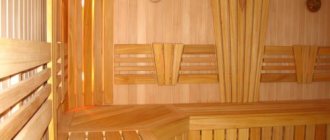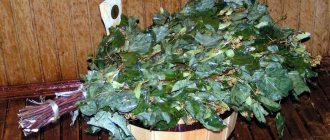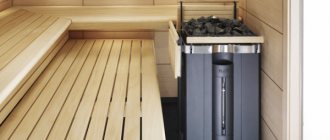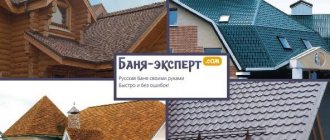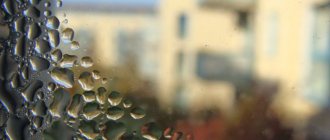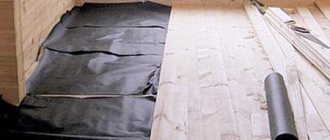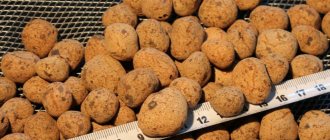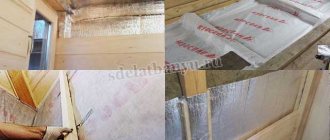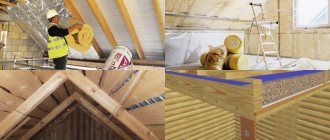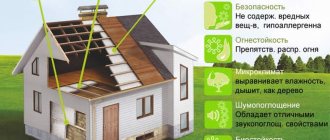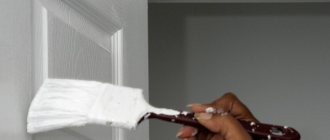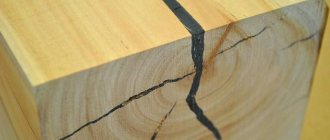Which roof water vapor barrier would be the best option? Who doesn’t want to live in equally comfortable conditions in the summer heat and winter cold? Obviously, proper insulation can help cope with the cold and save on heating costs. But the problem is that such excellent insulation as mineral wool loses its qualities when wet.
Roof hydro-vapor barrier can protect mineral wool thermal insulation materials from moisture. Of course, the roofing material itself does a fairly good job of preventing precipitation from directly getting inside onto the insulation, which cannot be said about the condensation formed under the roof. In this case, you will need a high-quality hydro-vapor barrier, which will protect the insulation from water vapor rising upward from the living quarters.
Why do you need a vapor barrier?
Each house has a certain microclimate. Comfortable living means having a bathroom or shower, a kitchen and other rooms with different humidity levels. During the cleaning process, the floors are washed.
Vapors and moisture generated indoors every day settle on the surface of walls and floors. Condensation causes the deterioration of flooring, subfloors, and other decking materials. The floor on the first floors in private sector houses is additionally exposed to moisture coming from below (from the ground).
A vapor barrier film (membrane) is used to create a protective barrier against steam and moisture. With its help, it is possible to neutralize negative factors affecting the microclimate of the home. At the same time, the floor will remain breathable.
Wooden buildings especially need vapor barrier. In houses made of concrete, a protective layer is also appropriate. This will reduce the humidity level in the room.
Benefits of working with a group
- We offer a wide range of materials, of various types, which differ in application, characteristics and price.
- We will help you choose the optimal composition of high-quality roofing or floor coverings for a specific facility. The vapor-waterproofing we have selected for your home will last a very long time.
- We will conduct a master class on working with materials of any type purchased from us.
- We can carry out turnkey work - selection of materials for the project, delivery to the site and their installation.
- Favorable prices, one of the best in Moscow.
- Fast delivery of materials to the site - your own warehouse and transport.
Vapor barrier materials
The selection of vapor barrier materials for flooring is impressive. In order not to make a mistake in choosing, it is worth considering the characteristics of each option.
Ordinary polyethylene film
This is a solution for those cases when it is not possible to purchase a special insulator. On the one hand, it creates a hydro- and vapor barrier. On the other hand, before using film, it is worth considering all the disadvantages of this option:
- polyethylene provides a greenhouse effect (this prevents natural air circulation);
- When installing a vapor barrier, it is necessary to leave a technical gap to drain condensate (due to the smoothness of the film surface, moisture rolls onto the insulation, which shortens its service life).
Vapor barrier film made of polyethylene
One side of the material remains smooth, the other has small fibers that retain condensation. This is an affordable insulator, but a significant disadvantage is the obstruction of the natural circulation of air masses, which is why the floor or wall stops breathing. Manufacturers solved this drawback by producing perforated film.
Polypropylene film
Unlike its polyethylene counterpart, a polypropylene product is more durable and resistant to atmospheric factors. The material itself has the ability to form condensation. Therefore, during its manufacture, a layer of viscose with cellulose is rolled. During installation, the anti-condensation side is laid down on the work surface. A ventilation gap is left between the heat insulator and the vapor barrier.
Diffuse membrane
This type is used when arranging residential premises or utility rooms. This is the best vapor barrier option. It perfectly retains vapors, thereby preventing premature destruction of the thermal insulation layer.
Depending on the number of layers and additives used, membranes are divided into several types. Among them there are multifunctional films that provide steam, hydro and thermal insulation.
- Membranes with a foil layer are produced to retain heat in baths and saunas.
- Perforated insulators provide increased steam permeability during operation under special conditions.
- A two-layer material is created by connecting smooth and rough layers with self-adhesive foil tape. The insulator has no punctures, cracks, breaks or other defects.
- Three-layer material is intended for baths and saunas. It is attached under the lining or finishing panels using a stapler or special tape.
The performance characteristics of the building and the service life of the floor depend on the correct choice of vapor barrier film.
Liquid rubber
Another option is liquid rubber. It covers the entire surface without leaving any gaps. The material is made from polymer substances and bitumen. Among the advantages: high elasticity, seamless coating of the working surface, universal purpose (steam, hydro, sound insulation).
Rubber is applied over large areas using an automated method. In small rooms, it is advisable to process the floor manually.
What is waterproofing?
Before moving on to considering various technologies, let's define what waterproofing is.
Waterproofing is a set of measures aimed at protecting building structures from the harmful effects of moisture.
Under the influence of moisture, the performance characteristics of building structures sharply deteriorate. When freezing, water that gets into the pores begins to expand, which leads to the destruction of even particularly strong structures. In addition, high humidity is the main cause of mold and the development of other microorganisms.
In order for waterproofing to fully fulfill its functions, the materials used must meet the following requirements:
- have a high degree of water resistance;
- have sufficient mechanical strength;
- maintain elasticity with a significant decrease in temperature;
- maintain its performance properties over a wide temperature range;
- be resistant to ultraviolet radiation and aggressive chemical compounds.
Only timely and high-quality waterproofing can protect building structures from atmospheric influences.
Types of waterproofing
Depending on the operating conditions, the waterproofing material can be:
- anti-pressure
. Belongs to the category of external insulation. Can withstand significant water pressure. Can be used for treating basements with high groundwater levels;
non -pressure Such materials are not designed to work under high pressure conditions;- superficial
. Such waterproofing is widely represented by roll and sheet materials on a bitumen or polymer basis; - anticapillary
. Used for processing porous materials. The principle of operation is based on clogging the pores of the material with special hydrophobic compounds. This treatment prevents moisture from penetrating deep into the structure; - complex.
Such materials provide the most complete protection of buildings and structures from the harmful effects of moisture. The main disadvantage of such materials is their high cost.
Before making the final choice of waterproofing, it is necessary to evaluate the operating temperature range and the intensity of mechanical stress. In addition, the presence of ultraviolet radiation and contact with aggressive chemical compounds is of great importance.
Laying vapor barrier on the floor
The vapor barrier layer is an integral part of the pie, which includes: joists, waterproofing, subfloor, insulation and finished floor. Before laying the vapor barrier, the surface is prepared. If it is wood from a new building, then it is impregnated with an antiseptic and coated with a layer of protective varnish.
When preparing the surface of a house in use, it is necessary to remove the old coating from the floors and other materials used previously. Before you start laying the pie, you need to check the strength of the joists and the rough foundation. They should not sag or show signs of destruction of the wood structure.
The vapor barrier is laid on a flat surface, previously cleared of debris. There should be no nails or other sharp objects on it that could damage the film. Before laying the material, check which side it should be laid on. If it is ordinary plastic film, then there is no difference. Izospan is placed with the light side to the insulation. The fleecy part of the insulator is placed towards the room. The foil material is laid with the shiny side facing the room.
If the floor structure is non-standard and has hard-to-reach places, it is advisable to coat them with additional bitumen vapor barrier.
When laying film sheets, an overlap is observed on the previous strip with an overlap of 15-20 cm. To create a strong connection, the joint is glued with foil tape.
When insulating the floor, a vapor barrier film is laid before and on top of the heat insulator. The role of insulation is assigned to mineral wool, polystyrene foam or polystyrene foam.
One of the technology requirements for laying vapor barriers is compliance with the sequence of formation of the cake.
- Lay waterproofing material on top of the subfloor.
- Lay a vapor barrier over the joists. The film is fixed with galvanized nails, adhesive tape or a stapler.
- Insulate the space between the joists using the selected type of heat insulator. The material should fit tightly to the joists, leaving no chance for the formation of cold bridges.
- Apply adhesive tape around the perimeter of the room at the bottom of the walls.
- Lay a vapor barrier membrane. The canvases are laid across the joists. The connections are made overlapping and the joints are sealed with foil tape. It is considered normal if the film sags slightly in the center.
- Secure the vapor barrier using a stapler.
- Secure the edges of the membrane extending onto the wall with adhesive tape.
The work is completed by installing the floor.
How to properly install hydro-vapor barrier
A very important point when building a warm roofing pie. Water vapor barrier is designed to limit the penetration of water vapor from the living spaces of the attic into the thickness of the mineral wool. We have already mentioned above that it is better not to insulate the roof at all than to do it incorrectly. Practice shows that if technology violations are critical, then the rafter system will have to be repaired in 7–10 years. What is a warm roof repair? This includes dismantling roofing coverings, waterproofing (vapour-permeable wind protection), and removing thermal insulation. Next, you need to go inside the premises, remove the external wall decoration and water vapor barrier. The last stage is a revision of the rafter system and replacement of failed load-bearing elements.
How should you make a roofing pie to avoid such problems?
Step 1. Carefully inspect the material and place it correctly. All inscriptions should be facing the room, and not vice versa. You need to start laying the water vapor barrier layer of the pie from the ridge part. Roll out the roll so that it is located in the middle of the structure. You need to work on a stepladder and with an assistant. Roll out the roll in parts, making preliminary fixations every 1.5–2.0 m. The final one should be performed only after the material is completely leveled, there are no folds or kinks.
All signs must face the room
Step 2. Secure the water vapor barrier with a construction stapler, the distance between the staples is approximately 25–30 cm.
Fastening the blade
Important. There is no need to nail the staples too often; this will only increase the number of holes. The material is light and fits without problems.
It is advisable to install thermal insulation after covering the roof. During roofing work, it is necessary to lay out a vapor barrier (wind barrier) and secure it with strips. Then put a counter-lattice on the slats, it will provide ventilation of the under-roof space, condensed water will be naturally removed. Roofing materials are laid after preparing the vapor barrier layer.
Some builders do the opposite, first installing a water vapor barrier inside the premises, and then laying insulation and covering the roof. This order of work cannot be considered optimal. The fact is that if mineral wool gets wet due to precipitation, it will have to be removed and dried. This greatly complicates the construction of a warm roof and deteriorates its quality.
Step 3. The second layer is rolled out parallel to the first, you should gradually move down towards the cornice. After alignment, secure the membrane with staples.
Step 4. Very carefully seal the junction of the water vapor barrier to the chimneys.
The junction of the water vapor barrier to the chimney
Use special sealing tape for this; never buy low-quality additional materials. If the adhesive tape has insufficient adhesion characteristics, then after a short time it will come off, and a large gap will form between the surface of the chimney and the water vapor barrier. It is impossible to notice it in time due to the finishing of the internal walls, and the appearance of visible condensate leaks will require complex repairs.
Step 5. The overlap between the rows should be within 10 cm, carefully glue them.
The overlap between the rows is taped
Experienced builders advise first nailing small slats to the rafters in these places. For what? Firstly, they will create a gap between the mineral wool and the hydro-vapor barrier, which will improve the conditions for removing trapped moisture. Secondly, if there are slats under the overlaps, then you can press the tape firmly, the sealing will be more reliable.
The slats are nailed down
Practical advice. When installing the insulation, take measures so that it does not rest against the water vapor barrier. Mineral wool must be fixed in the space between the rafters. This can be done with rope made of synthetic materials, metal profiles or wooden slats. The fact is that mineral wool bends and sags a little over time under the influence of gravity. Unforeseen forces begin to affect the water vapor barrier, it bends, and the sealed joints become depressurized.
Roof insulation
A roll of vapor diffusion membrane is rolled out parallel to the ridge
The overlap between the vapor diffusion membrane sheets is 10-15 cm
Fixing the canvas
Sealing the joints of the vapor diffusion membrane with self-adhesive tape
Organization of the ventilation gap
There are 10 cm gaps in the bars every 2 meters
The membrane is secured with slats
After completing the work, you need to carefully inspect the roof surface again and correct any identified problem areas. Particularly carefully monitor the connection of the water vapor barrier to various pipes and other engineering structures. Experienced builders recommend finishing them with any silicone sealants before fixing the membranes. They will completely fill the seams in masonry building materials and improve the quality of water vapor barrier. And this, as already mentioned, plays a decisive role in the longevity of operation and the heat-saving efficiency of buildings.
Vapor barrier with liquid rubber
The process of applying liquid rubber to create a vapor barrier layer takes place in several stages. The working surface is cleaned of debris and loose fragments. Next, open the container with the polymer-bitumen material and mix it thoroughly. Using a brush or roller, the composition is applied to the subfloor. The liquid vapor barrier has a thick consistency, so it is quite possible to use a spatula for the work.
The treated floors are dried. After drying, a film forms on the surface, which, thanks to its high adhesion, firmly adheres to the base. It does not allow moisture to pass through either from below or from above.
The average consumption of liquid rubber is 1-1.5 kg/1 m2. The thickness of the layer is 0.7 mm. To create a vapor barrier for a floor in a room of 10 m2, 10 liters of bitumen composition is sufficient.
When using liquid rubber, it is worth taking into account the type of finishing. The polymer-bitumen material is black in color and should not make undesirable changes to the finish.
FAQ
What is the difference between hydro and vapor barrier?
The main difference between materials is their functionality. Vapor barriers play the role of a protective barrier against the effects of steam accumulating indoors. The task of waterproofing comes down to preventing water from entering the room from inside, which is typical during precipitation. Externally, the materials are very similar, but their technical characteristics are different. Waterproofing must be moisture-proof, but still breathable. The vapor barrier membrane is completely water- and air-tight.
Is there a need for a ventilation gap between the vapor barrier and the floor?
A ventilation gap is left between the insulation material and the vapor barrier. In the case of the buffer zone between the vapor barrier and the finished floor, not everything is clear. Taking into account the principle of creating a pie, it turns out that a ventilation gap is necessary. It is possible to create it in a roof structure or in a wall. With gender it’s more difficult. Experts express the opinion that even when arranging a space, there is no guarantee that it will be sufficient for normal air circulation (if air flow can move there at all). Therefore, the finished floor is laid directly on the vapor barrier layer if a material that is inert to microbiological processes is used for the arrangement. Wood and other finishes with low moisture resistance are kept away from the insulator to prevent the development of mold when collecting condensate. The decision to create a ventilation gap is also influenced by the type of vapor barrier. Polypropylene and polyethylene films require space through which condensate is drained. When using liquid rubber there is no such need. Before you start laying the film, it is recommended that you read the instructions for the product, which prescribe the procedure for laying the vapor barrier.
Waterproofing and vapor barrier: what is the difference ↑
Before installing a new roof, you need to choose the right hydro- and vapor barrier films so as not to encounter various unpleasant surprises in the future, for example, stains on the surface of the attic ceiling in the absence of any defects in the roofing covering. That is why, first of all, it is necessary to clarify what waterproofing and vapor barrier are, what functions these insulating materials perform.
- Waterproofing. The main purpose of the waterproofing film is to protect the under-roof space from the penetration of moisture from the outside. Roof waterproofing is required in cases where the proposed thermal insulation layer is made of mineral wool insulation. Insulating a warm attic is considered a necessary operation, since the roof can only retain precipitation: raindrops and snow, while it cannot retain water vapor rising after fog or warm summer rain.
If there is no waterproofing of the roof from the inside, steam will directly enter the thermal insulation layer, “clogging” the air pores in it, and this will sharply reduce the properties of the insulation. This process is especially active in winter, when water vapor settled in the pores of the thermal insulation quickly crystallizes. That is why the thermal insulation layer needs protection from moisture coming from outside. This is exactly where film waterproofing material will functionally help.
- Vapor barrier. A vapor barrier film protects the insulation from the penetration of warm vapors coming from the ceiling. And they, as costs of human life, are present in abundance in residential premises, regardless of whether there is ventilation there or not, and how effective it is. This is what distinguishes a vapor barrier from a waterproofing material. Vapor insulating films are usually laid before the insulation layer.
On a note
The main difference between roof hydro-vapor barrier is the way modern waterproofing membranes function: they only allow steam to pass out from the thermal insulation layer, preventing water from penetrating from the outside.
Water vapor always diffuses towards cold air. The barrier that will first encounter steam on its way to the insulation layer will be the vapor barrier. Of course, it is difficult to expect that no part of the steam will nevertheless leak through the vapor barrier into the insulation. However, thanks to the vapor permeability of the waterproofing, steam will freely escape from it, after which it will go outside, picked up by ventilation flows.
Advice from professionals
To avoid “excruciating pain” for wasted effort and money, professionals advise adhering to the following simple rules:
- when starting to implement a construction project, carefully read its graphic part and explanatory note;
- do not hesitate to ask questions to the designers, foreman and workers at all stages of work, be meticulous until the situation is completely clarified, remembering that they will go to the next projects, and you will live here;
- do not oppress the contractor with petty quibbles, but strictly control each stage of the work, sign acceptance certificates only after all comments have been eliminated.
The given “professional advice” is universal in nature and applies not only to laying vapor barriers on the floor, but also to all types and stages of construction work.
